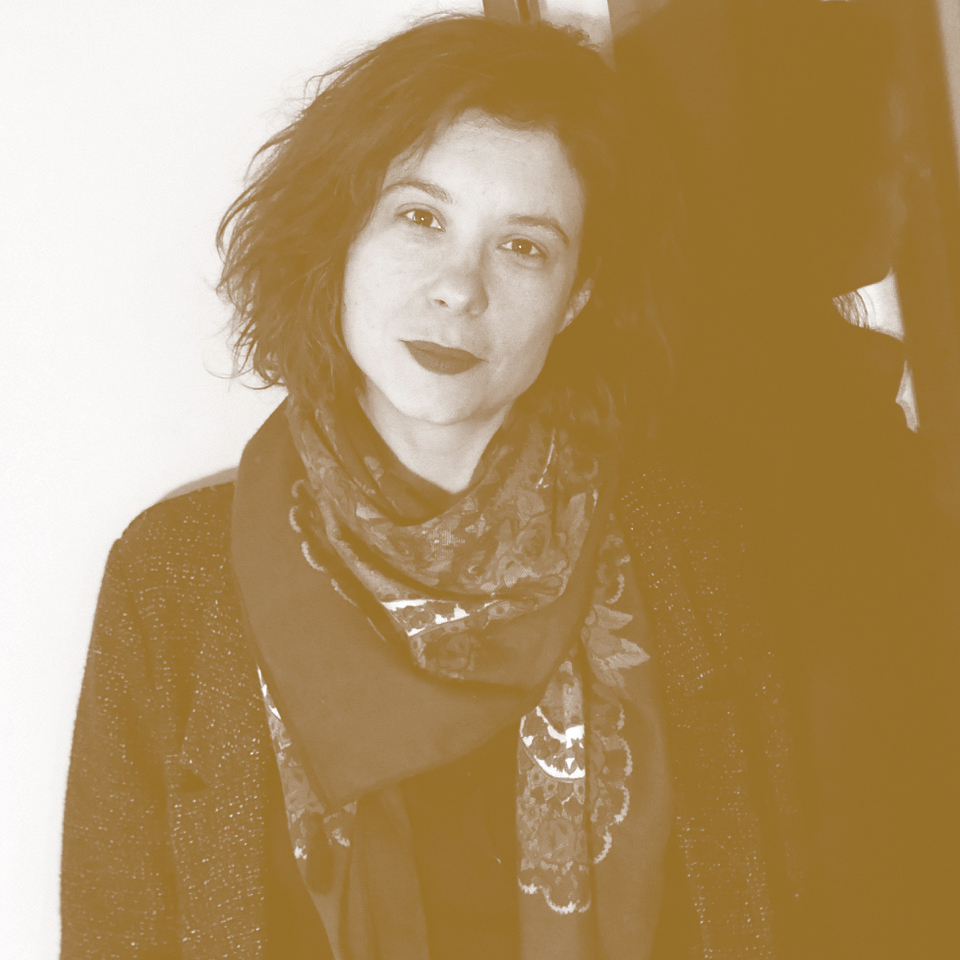Images of resistance
For the fourth edition of its research and creation support programme, the Institut pour la photographie is taking a new look at the extensive field of images of resistance in terms both of its photographic, historic and contemporary culture as well as its visual strategies, from the street to social media.
Resistance, defending a cause or rights, political struggles, demands by trade unions and society as a whole, a search for visibility: engagements that take the form of social movements, individual or collective resistance. These will be the themes of the research projects developed.
The laureates
Maxime
Boidy

Grèves locales, grève générale
Images et mythes des résistances ouvrières en France (1890-1914)
This research project offers a fresh look at the visual archives of the French workers’ movement between 1890 and 1914, fuelled by the industrial conflicts during this period in the current Hauts-de-France region. Although the strikes that peppered the “Belle Époque” are documented, little thought has been given to the plurality of visual practices in these uprisings. Rich in meaning, the iconography preserved in the archives sometimes only provides information on some of the actions of the insurgent crowds. This project documents and considers the plurality of practices and collective imaginary and their relationship with photography or press cartoons. It focuses on the key idea of revolutionary unionism at the turn of the 20th century: the general strike. It must be understood in the exact terms with which it is debated in revolutionary circles: as a myth constructed by the daily experience of work and struggles. The goal here is to consider the mythical imagery of the strike as one visual corpus among many, in the same manner as press imagery or that relayed by union channels. Incidentally, it is also a question of considering the repercussions, right up to the aesthetics of contemporary social movements: anywhere where the ideal and the practices of direct-action trade unionism are prolonged and reinvented today.
—
Maxime Boidy is a researcher in visual studies. Lecturer at Gustave Eiffel University, and member of the LISAA laboratory (EA 4120), his work mainly focuses on the intellectual history of visual knowledge and political iconography. In particular, he published Les Études visuels (Presses Universitaires de Vincennes, 2017) and co-edited the book Visions et visualités. Philosophie politique et culture visuelle (POLI Éditions, 2018).
Émilie
Goudal

Dans l’oeil d’Agnès Varda, « suivre tous les désordres et les charmes de la décolonisation »
In a 1977 interview, filmmaker and visual artist Agnès Varda (1928–2019) linked “the disorders and charms of decolonisation” to feminist emancipatory struggles, setting out an intersectional approach ahead its time. Using the artist’s photographic work as a primary source, this project studies Agnès Varda’s visual production echoing the feminist, anti-imperialist, and anti-racist pulsations affirmed on an individual and collective scale. Interspersed with the author’s words, works, and writings as well as with other visual and textual archives of emancipatory struggles (Musée du Quai Branly, La Contemporaine, Cinémathèque, etc.), the study of the unpublished photographic corpus, kept at the Institut pour la photographie, could find points of visual and conceptual convergence fostering a possible emergence of an Aesthesis of emancipation. Considering these “charming disorders” as a common thread in this corpus could identify correspondences with other filmmakers, photographers, and international activists who, from Algiers to Paris and from the United States to Cuba, have a different perspective, if only by collectively constituting a deconstruction of or resistance through images. Agnès Varda’s photographs will therefore be connected to images engaging, in counterpoint, other imaginaries in the face of a certain latent visuality, forged by plural political dominations.
—
Doctor of history of art and associate researcher at the CEAC (University of Lille), Émilie Goudal is the author of Des Damné(e)s de l’Histoire. Les arts visuels face à la guerre d’Algérie (Presses du réel, 2019). Her works focus on the interpenetrations between contemporary art, politics, and memory (Germany, Algeria, United States, France) as well as on the concept of Aesthesis of emancipation in a decolonisation context. They have been published in the Perspective, Critique d’art, and Aware journals as well as in various exhibition catalogues and collective works.
Livia
Melzi

Tupi or not tupi
This project documents eleven sacred cloaks, belonging to the Tupinambá, removed from Brazil during the first centuries of colonisation. These cloaks were worn during cannibalistic rituals, a warrior practice that founded the cultural dynamics of this tribe, based on revenge. The motif of cannibalism, especially since the publication of Oswald de Andrade’s Manifesto Antropófago (1928), runs through Brazil’s collective imagination as a territory capable of welcoming plural visual arts gestures, questioning Brazilian identity and its encounter with the Other. The project includes a set of heterogeneous objects: an ongoing photographic series of these eleven coats in their current conservation context, their archives, a series of research notebooks, and other images related to the Western history of these artefacts. These items are a source of reflection and production to construct different visual narratives and question the persistence of certain power patterns in the contemporary world. The epilogue of this research focuses on the development of a photographic dialogue with Glicéria, an indigenous Tupinambá leader who, since 2019, has been reappropriating his people’s identity, where the cloaks have a central role.
It is from a set of photographic archives that the knowledge on these cloaks is transmitted and returned to the descendants of the Tupinambá. Glicéria uses this material and also produces his own images. Breaking away, she offers her own visual narrative on ‘the comeback of the tupinambá cloaks’.
—
Livia Melzi was born in 1985 in Brazil, a qualified oceanographer, she followed the doctorate programme in Art and Literature at the University of Zurich. The artist received the Grand Prix du Salon de Montrouge 2021 with her Qu’il était bon mon petit français and will be exhibiting at the Circulation(s) festival and the Palais de Tokyo in 2022. She works on archives, memory, and the construction of an imaginary of Brazil from images and ethnographic objects. She seeks to question, through photography, the mechanisms at work in the production, conservation, and circulation of images.
Find the work of Livia Melzi on her website and her Instagram profile
Collectif Moss

Deal with it
Esthétiques de la réparation
Considering images both as bearers of different forms of real or symbolic violence and as interfaces for individual or collective repair, Deal with it – Esthétique de la réparation examines the curative aspect inherent in certain visual arts gestures in artistic practices, which act as tools of resistance. Erasure, covering, repetition, cropping, glitch, collection, imprint, collage, and even reconstitution, the multiple actions carried out by the artists on the body of images resemble attempts at conjuration and appropriation. Physical or dematerialised, images can be personal, found, from archives, or amateur images circulating online. These distinct gestures then act as micro-actions of individual resistance to events and general media overload. Also participating in a recovery/showcasing of parallel images or narratives, they contribute to repairing a form of cultural forgetting and erasure, in order to change dominant narratives and representations. As Legacy Russell points out in her book Glitch Feminism, ‘remixing (…) is a technology of survival’. Through close dialogue with a selection of artists who consider and heal images, this research project studies these different processes of resistance via images, within which the latter act as a pharmakon, both remedy and poison.
—
Having met while studying KASK’s Curatorial Studies programme at University College Ghent, Lieselotte Egtberts, Elisa Maupas, Lucie Ménard, and Anna Stoppa have worked together as a curatorial collective since 2019. Based on the complementarity of their profiles (artist, scientist, mediator, and art historian) and their various professional experiences (galleries, institutions, artist-run spaces in France, Belgium, Italy, United Kingdom, and the Netherlands), they work together organically and horizontally, approaching exhibitions as a playground. A few of their recent projects: Transient State, by the artist Pepa Ivanova at the Couvent des Clarisses, Roubaix (2021); (un)broken at Zwarte Zaal, Ghent (2022); Inbox Interference, online project, The Wrong Biennale (2022).
